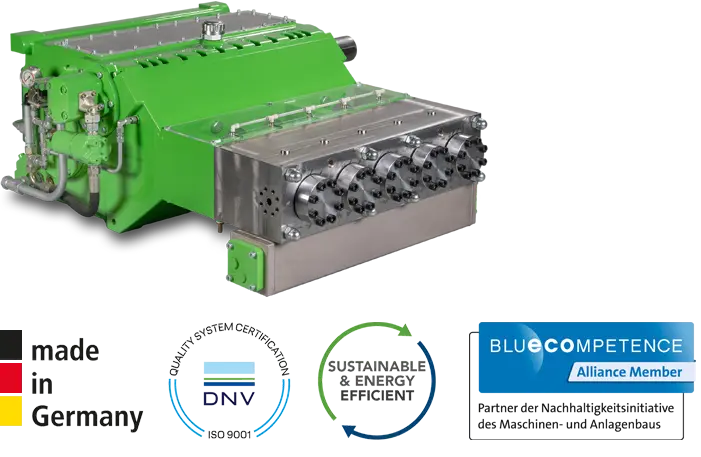What Are Glycol Pumps?
Glycol pumps especially stand out in the process of gas dehydration. These specialized devices are engineered to remove water vapor from natural gas, ensuring that the gas adheres to stringent quality and safety standards required for transportation and use. Their role is pivotal for several reasons:
- Quality and Safety Assurance: By extracting water vapor, glycol pumps prevent the risks of pipeline corrosion and freezing, ensuring that natural gas can be transported and used safely.
- Operational Efficiency: The removal of water vapor by glycol pumps enhances the efficiency of natural gas production, ensuring a smooth and uninterrupted flow.
- Environmental Impact: By ensuring that natural gas is free of water vapor, glycol pumps contribute to reducing the potential environmental hazards associated with gas transportation and usage.
- Adaptability: Engineered to operate across a wide range of pressure conditions, glycol pumps are versatile components that can be tailored to meet diverse operational requirements.
The benefits of using glycol pumps in industrial settings are profound. They not only enhance the operational reliability of natural gas production but also contribute significantly to maintaining the integrity and safety of the gas supply chain.
How Do Glycol Pumps Operate?
Glycol pumps function within a cyclical process in gas dehydration systems, playing a dual role that is both simple and ingenious. Here is how they operate:
- Circulation of Glycol: The pump moves wet (or rich) glycol from the contactor, where it absorbs water from the natural gas, to the reboiler. In the reboiler, the glycol is regenerated by heating, which releases the absorbed water.
- Continuous Dehydration: After regeneration, the pump transports dry (or lean) glycol back to the contactor. This cycle is crucial for the continuous removal of water vapor, ensuring the gas remains dry and meets quality standards.
Glycol pumps are a brilliant example of how smart design meets practical needs in the industry. Their work in moving glycol around to dry out natural gas shows off some innovative engineering. This is important because it helps make sure natural gas is safe, works efficiently, and can be relied upon. Thanks to these pumps, natural gas gets cleaned up and dried out, making it ready to be used or sold everywhere. In simple terms, glycol pumps are key players in making sure we have access to clean, usable natural gas.
Choose Reliability, Embrace Sustainability: Discover the KAMAT Difference
At KAMAT, we pride ourselves on our unwavering commitment to delivering high-pressure technology that stands the test of time. Our dedication to quality and reliability is not just about the products we sell; it extends into comprehensive customer support, repair services, and consultations. We understand that the efficiency of your operations relies on the smooth functioning of our pumps, which is why we are dedicated to ensuring they operate at their best. From the moment you choose a KAMAT glycol pump, you gain a partner committed to providing solutions tailored to your specific needs and challenges.
Moreover, we are deeply committed to sustainability. We recognize the importance of minimizing environmental impact in our manufacturing processes and through the lifecycle of our products. Our glycol pumps are designed with this in mind, aiming to maximize operational efficiency while reducing energy consumption and emissions. By choosing KAMAT, you are not only selecting a product that delivers exceptional performance but also one that contributes to a more sustainable future.
At KAMAT, we are not just selling pumps; we are offering a promise of reliability, support, and sustainability. Join us in our journey towards a more efficient and environmentally conscious industrial landscape.

